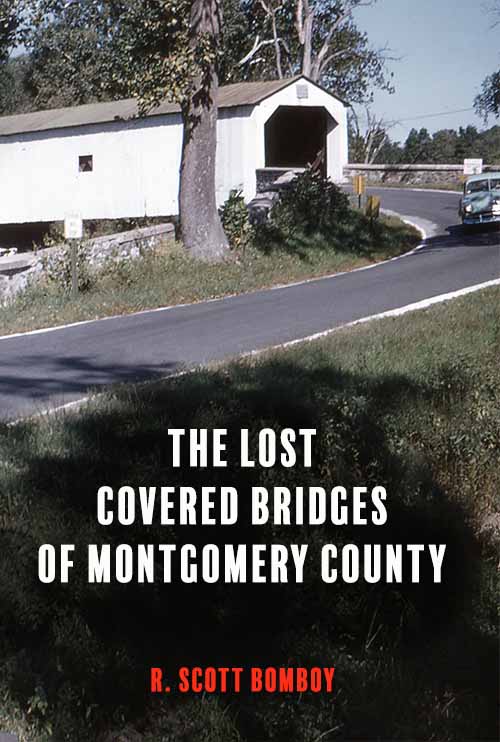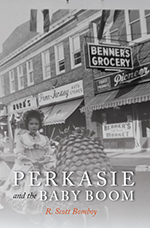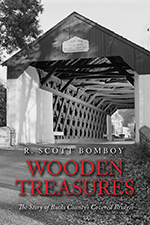Like many towns on the old North Pennsylvania Railroad line, Perkasie was created as a train town, with life built around the arrival and departure of passenger and freight services. But after World War II, train services steadily faded away during the Baby Boom.
The first trains rolled into Perkasie in late 1856, about 22 years before it became a borough. The last regularly scheduled passenger train left Perkasie on July 26, 1981. In between, trains brought business and tourism steadily to Perkasie Borough starting in 1879, when the Philadelphia and Reading Railroad acquired a long-term lease on the Bethlehem branch system built by the North Pennsylvania Railroad.
By 1900, the region between Ambler and South Bethlehem became known as “the North Penn” or “the North Penn Valley.” The term “North Penn Valley” frequently appears in regional newspapers like the Philadelphia Inquirer, the Allentown Morning Call, and the Perkasie Central News starting in 1909, with the phrase was associated with the cigar business, baseball leagues, church synods, fraternal organizations, and other cultural groups.
However, by 1945 the transportation network that was the North Penn Valley’s backbone was ready for significant changes. While the railroads played a key role during World War II, the advent of motor vehicles lessened the dependence on mass transportation, especially at the Baby Boom’s start in 1946. By then gasoline rationing had ended, families started buying homes and cars, and employment opportunities were not always close to the old North Penn line.
The Reading Railroad was now the business entity running the train system in Perkasie and neighboring Sellersville, and the Reading started scaling back services in Sellersville first. In December 1950, the Reading Railroad proposed the idea of closing its passenger station in Sellersville and asked for public comments at a Doylestown meeting. No action was taken by the railroad. In 1952, the Reading started using diesel engines and added a new commuter service, called “the North Penn,” with a local train crew of Wilson Hendricks, Joseph Bickley, and Hubert Graham. In 1955, the Reading introduced discounted Shoppers’ Tickets to lure suburban consumers to Philadelphia.
In March 1958, the Perkasie News-Herald marked the railroad’s 125th anniversary and raised questions about its future. “Railroads are having difficult problems these days, what with decreasing freight and passenger revenues on one hand and increasing costs and outdated restrictions on the other, not to mention government help to competitors trucks, Airlines and shipping. Fortunately, it is now realized that the railroads are a necessity for defense, weather and other emergencies.”
Sellersville residents learned in September 1959 that the Reading Railroad would ask the Public Utilities Commission to remove the Reading’s agents from the Sellersville station. In 1960, the Reading discontinued two commuter trains into Philadelphia. Then in February 1961, the Reading Railroad automated the switching process at the Perkasie station, which had been manned manually since 1856 because Perkasie’s station controlled trains moving through the Landis Ridge tunnel. Twenty years earlier, 20 people worked at the Perkasie station, and now only three employees remained.
More service and station cuts came in the following years. The railroad eliminated all express trains on the Bethlehem branch in 1962. On September 4, 1962, the Reading ended station agent service in Sellersville. Also in 1962 the Reading Railroad stopped transporting mail on the Bethlehem branch line. In July 1964, the Reading Railroad make the shocking announcement that it would ask the PUC to eliminate all passenger trains between Bethlehem and Lansdale, including service out of Bethlehem, Coopersburg, Quakertown, Perkasie, Sellersville, Telford, Souderton and Hatfield. After public hearings in Doylestown and Bethlehem, the Reading decided not to pursue the plan.
In September 1966, the Reading posted a notice on its Perkasie station that he would seek permission to end agency service in Perkasie. Perkasie Borough Council and the Pennridge Chamber of Commerce filed formal protests with the PUC. In March 1967, the Southeast Pennsylvania Transportation Authority (SEPTA) joined Perkasie Borough in opposing the plan. But the appeals failed and agency service stopped in Perkasie on March 29, 1968. In its decision, the commission said passenger and freight traffic had decreased greatly in Perkasie and closing the station would cause minimal inconvenience for those still wanting to take advantage of train services. By 1981, the Reading Railroad had gone into receivership and had been acquired by ConRail. The former Bethlehem Branch came into SEPTA’s possession. SEPTA finally ended train service in Perkasie in July 1981.
Since then, SEPTA has leased the tracks between Lansdale and Quakertown to two private freight haulers. While there had been some talk in SEPTA’s planning of studying a return of passenger service on the Bethlehem line, the agency’s decision in 2018 to focus on a new King of Prussia line curtailed those discussions.









